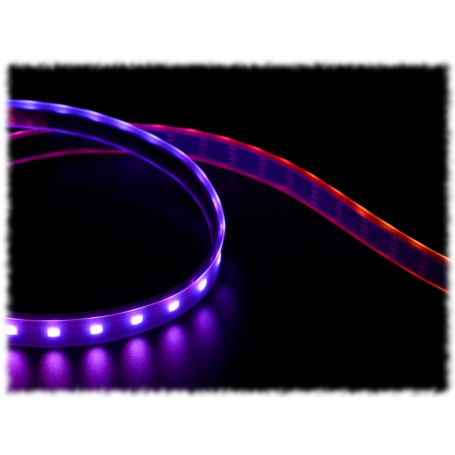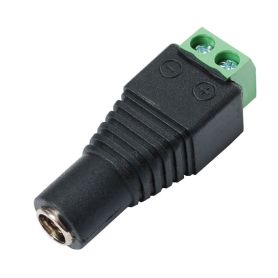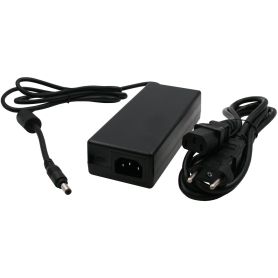DotStar Ribbon 60 LEDs Digitals - 1M
DotStar Digital RGB LED ribbon/strip - 60 LED per 1m, Black pcb
Payments are secured by LyraCollect, a French payment collection company.
It is possible to delivered to your home, to a pick-up point or picked up by appointment at MCHobby
We prepare, pack and ship your orders with great respect and care.
Smart APA102 RGB LEDs - Data & Clock lines
Go beyond NeoPixel, here is the arrival of a new LED ribbon! The DotStar LED ribbon represents a nice upgrade for people who already love and use NeoPixels ribbons. Here's something even better than the NeoPixels ... the DotStar. The DotStar LEDs use two-wire SPI communication, so you can push the data faster than with the NeoPixel protocol at 800 KHz and there is no specific time constraint as with the NeoPixels. These ribbon also have a significantly higher PWM speed, it is therefore possible to make POV (Persistence-of-Vision) displays and have less flickering effect, especially in low brightness.
Like the NeoPixels, the DotStar LEDs are the size of the 5050 LEDs with a microcontroller inside the LED. You can set a color / brightness for each LED (24-bit color, i.e. 8 bits for each of the colors red, green, blue). Each LED acts as a shift register, reading the incoming color data on the input pin and then expelling the data of the previous color on the output pin. You can control an infinite number of LEDs by sending a long chain of data, you just need to add or shorten the ribbon to get the number of LEDs desired for your project. The PWM controller is included in each LED maintains the selected color once it is received by the LED, so you can stop talking to the ribbon and each LED on the ribbon will continue to maintain "alone" the color communicated on the data bus .
However, unlike NeoPixels, these DotStar LEDs require 2 wires to send data - one pin for the clock signal and one pin for the data signal. This means that you need two pins of your microcontroller (not one but two) to control DotStars. Since the clock signal is separated on data signal (the clock signal indicates the rate of data transmission), you have the possibility to use any processor at any speed to control DotStar ribbons. You no longer need to worry about time constraints to send the color data to the ribbon. As a reminder, the NeoPixel ribbons impose severe time constraints for sending data. The hardware support of the SPI bus is welcome to order these ribbons but this is not essential (you can emulate a SPI by software).
This makes the DotStar really perfect for use with any microcontroller or microprocessor, including Arduino, Raspberry Pi, BeagleBone, Propeller, SparkCore and any raw microcontroller / microprocessor.
It is quite simple to port the library to a new environment and you can send the data to the pixels at a clock frequency (clock signal) at a speed of up to 32MHz!
Another great thing about DotStars is their high speed PWM. You just need to send 24-bit color data once per pixel / point, then the integrated LED + sound-controller-will take care of the PWM signal for red, green and blue color. On NeoPixels, the PWM signal is clocked at 400 Hz, which is very well but noticeable in low light and the ribbon is moving. DotStars has a PWM clocked at 20 KHz, which means that there is no pixelisation effect (flickering) when the ribbon moves, the color remains very stable and harmonious.
This product is the version of the ribbon meter equipped with 60 LED-per-meter, on a flexible PCB. This product is also available in 30 LED/m, 60 LED/m and 144 LED/m on both white and black flex PCBs.
This ribbon is produced on a flexible board (PCB) and delivered in a "weatherproof" sheath (Note: this is not a waterproof sheath that can be submerged but a sheath intended to withstand moderate climatic conditions).
You can very easily cut the ribbon using a cutter, there is a visible cut line between each LED (on the screen printing). Solder pads are accessible at an impaction of 2.5mm to allow you to weld sections of ribbon together.
You can also connect several ribbons together to make a longer one, just pay attention to the current you will need! A 5V 4A block can supply between half a meter to 1 meter of ribbon, a 5V/10A power supply can supply two meters or more (this mainly depends on your use and color palette chosen). You must imperatively use a well stabilized 5V DC power source to power this ribbon, do not use a voltage higher than 6 volts, this would completely destroy your ribbon.
This ribbon is delivered in 1 meter section with a ST SM 4-pin connector at each end. If you buy several meters of ribbon, you will receive several sections of 1 meter (there is no continuous section of several meters!). To connect these sections, we suggest using JST SM connectors for signal transport. For power wires, you may want to use a 2.1mm Jack connector equipped with a terminal block to more easily connect your power source.
Technical details
The manufacturer of Smart APA102C LEDs making up this ribbon uses the GRB order (G = green, R = red, B = blue). However, this color order changed in 2015 to become BRG (Blue, Red, Green), which means that when using the DotStar library, you will need to use the initialization parameter indicating which type of DotStar ribbon you are using. It will be BRG in the case of this purchase. See the tutorial section for how to do this.
Technical data (for the ribbon):
- Width (with protective sheath): 14mm
- Width (without protective sheath): 12.7mm
- Thickness (with protective sheath): 4mm
- 60 LEDs per mètre
- Pixels/point impaction: 7mm between LEDs
- Operating temperature: -40°C to 40°C
- Storage temperature: -10°C to 50°C
Technical data (for the LEDs):
- APA102 LED Datasheet
- Light source: LED Epistar 5050 SMD
- LED brightness: Red ~600mcd, Green ~500mcd, Blue ~150mcd
- Light beam angle: ~160°
- Max current per RGB LED: ~60mA (20mA max per color Red, Green and Blue)
Note: The ribbons are delivered with 4 welding points per segment but their arrangement could vary according to the supply. Remember to check before soldering or power your ribbon!
Tutorial
- DotStar LEDs (Adafruit, English)
Imagine NeoPixels LEDs that would have the effect of two tight espresso ;-) - Create a POV display for a bicycle wheel (Adafruit, English)
POV: Persistence of Vision is a technique using persistence of the retina to make our brain see an image from light points moving through space.
See also this Wikipedia article.










